The Rhino Piercing: A Brutally Honest Guide Before You Commit
In my time as a professional piercer, I’ve seen trends come and go. Some are gone in a flash, others stick around for good. But the rhino piercing? It’s in a league of its own. It’s not some new fad; it’s a modern classic for those who get that it’s more than just a piece of jewelry. It’s a serious commitment.
In this article
Honestly, this is a piercing I have a ton of respect for because of how technically demanding it is. It’s a true test of a piercer’s grasp of anatomy and precision. When someone walks in asking for a rhino, my first move isn’t to grab a needle—it’s to sit down and have a very real conversation. We talk about their nose, the long healing journey, and the risks. It’s a partnership, plain and simple. This guide is basically everything I tell my clients and apprentices, pulled from years of doing these successfully and fixing the ones that have gone wrong.
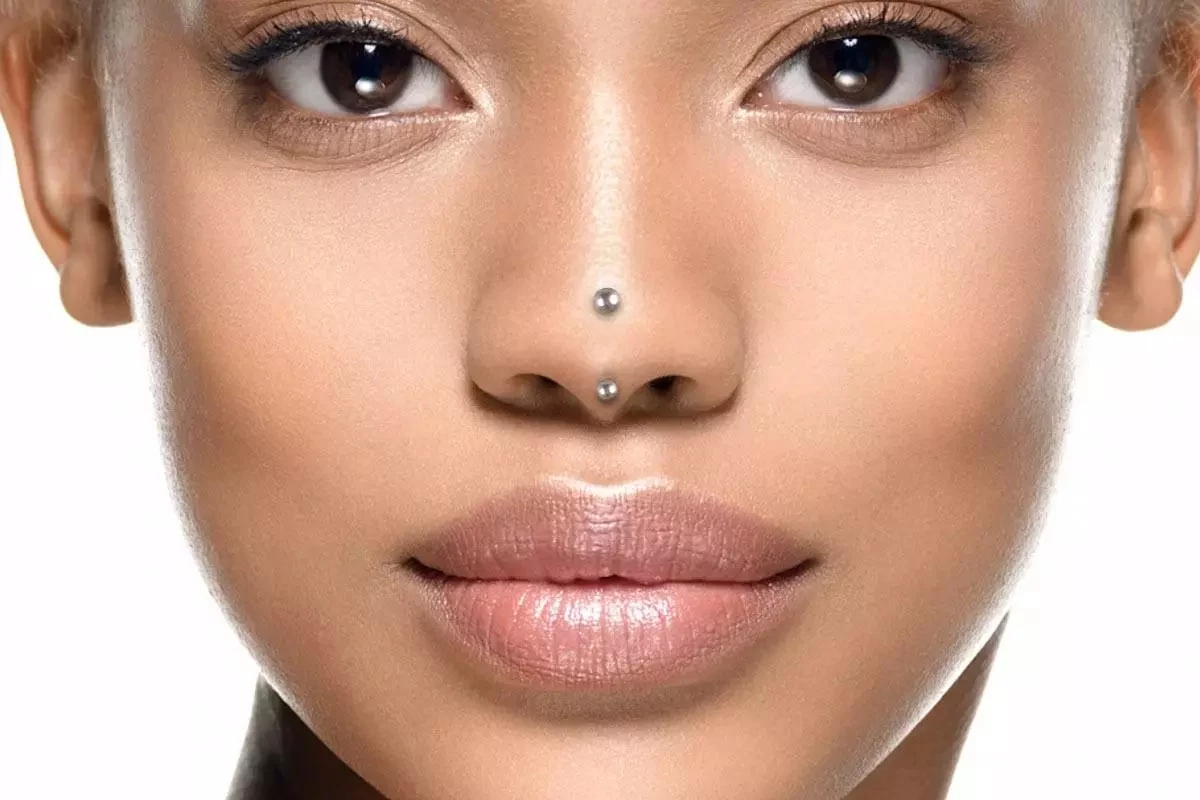
First Things First: Is This Piercing Really For You?
Before we even get into the nitty-gritty, let’s have a reality check. A rhino piercing looks incredible, but it demands a certain lifestyle, at least for a while. Ask yourself:
- Do you have patience? I’m not talking about waiting-in-line patience. I mean 6 to 12 months of diligent aftercare, no-questions-asked. There are no shortcuts here.
- What’s your job? If you work in a dusty environment or have a job that requires you to wear tight-fitting face masks or safety gear, this could be a major issue. Constant pressure is a recipe for disaster.
- How do you handle pain and discomfort? On a pain scale, most of my clients put the initial piercing at a solid 7 or 8 out of 10. The good news? It’s over in a second. But the first few weeks will be tender.
- Are you a glasses-wearer? Depending on where your glasses sit, they could put pressure on the top of the piercing. This is a huge deal. We’d have to assess this during a consultation, but it’s something to consider right now.
Oh yeah, and don’t mistake this for other nose piercings. A standard nostril piercing is a walk in the park compared to this—it’s less painful and heals much faster. A septum piercing is often considered low on the pain scale and is easily hidden. The rhino is highly visible, more intense, and requires a much bigger commitment than either of them.
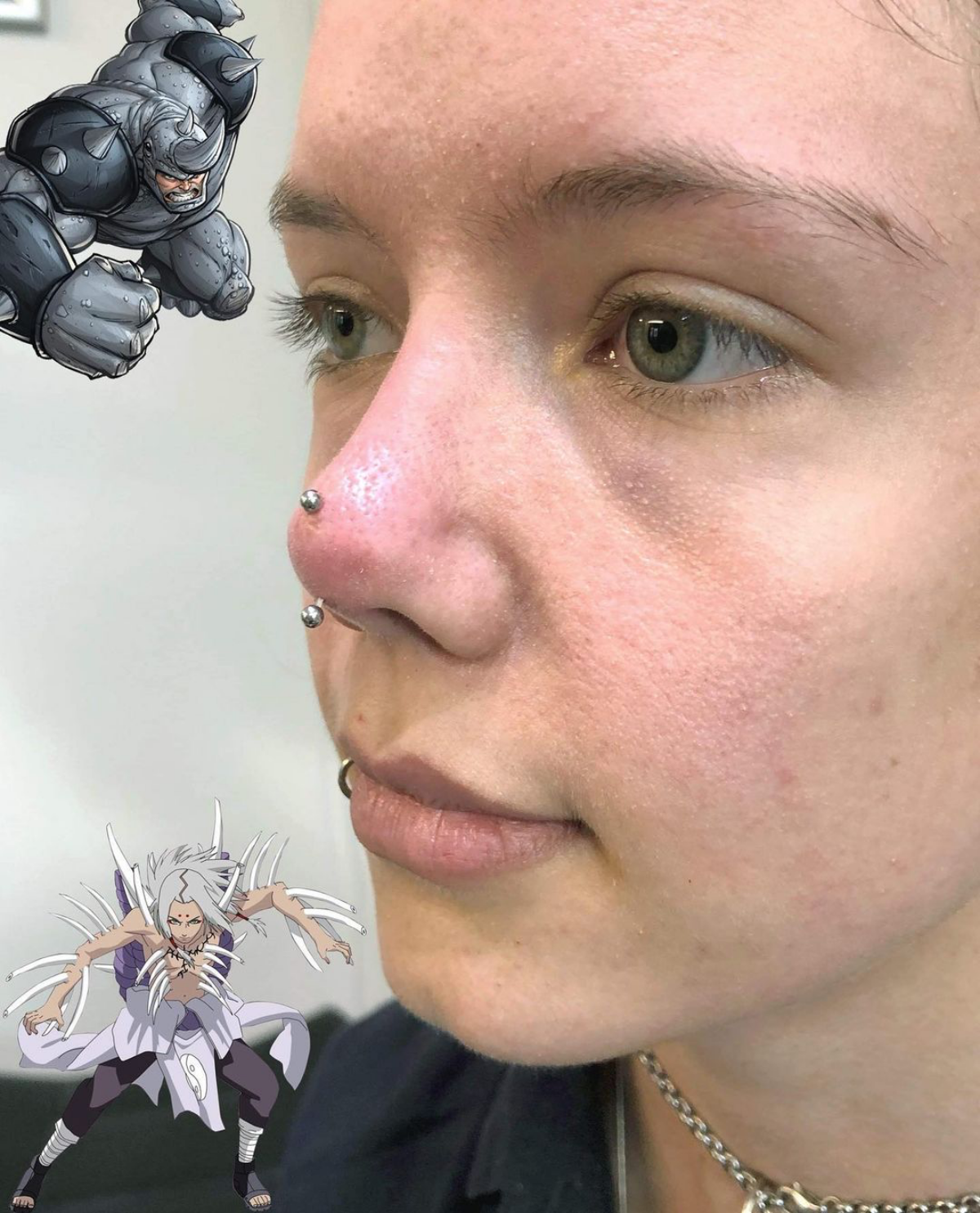
The Anatomy: It’s Deeper Than You Think
So, what are we actually piercing? It’s not just a pinch of skin. The tip of your nose is a complex map of cartilage, fat, and skin. A rhino piercing creates a vertical channel straight through this structure, entering above the tip and exiting underneath in that little bit of skin between your nostrils (the columella).
A skilled piercer isn’t just shoving a needle through and hoping for the best. We’re feeling for the “sweet spot,” a path that causes the least amount of trauma. The goal is to go through the soft tissue at the very front, avoiding direct contact with the dense, structural cartilage. Piercing through that main cartilage would be incredibly painful and could permanently alter the shape of your nose. Not good.
I had a client once whose cartilage at the tip of the nose was incredibly thick and angled sharply to one side. A perfectly straight, vertical piercing was just anatomically impossible without causing some serious trauma. It’s a tough conversation to have, but we had to say no. It’s always better to be safe than sorry.
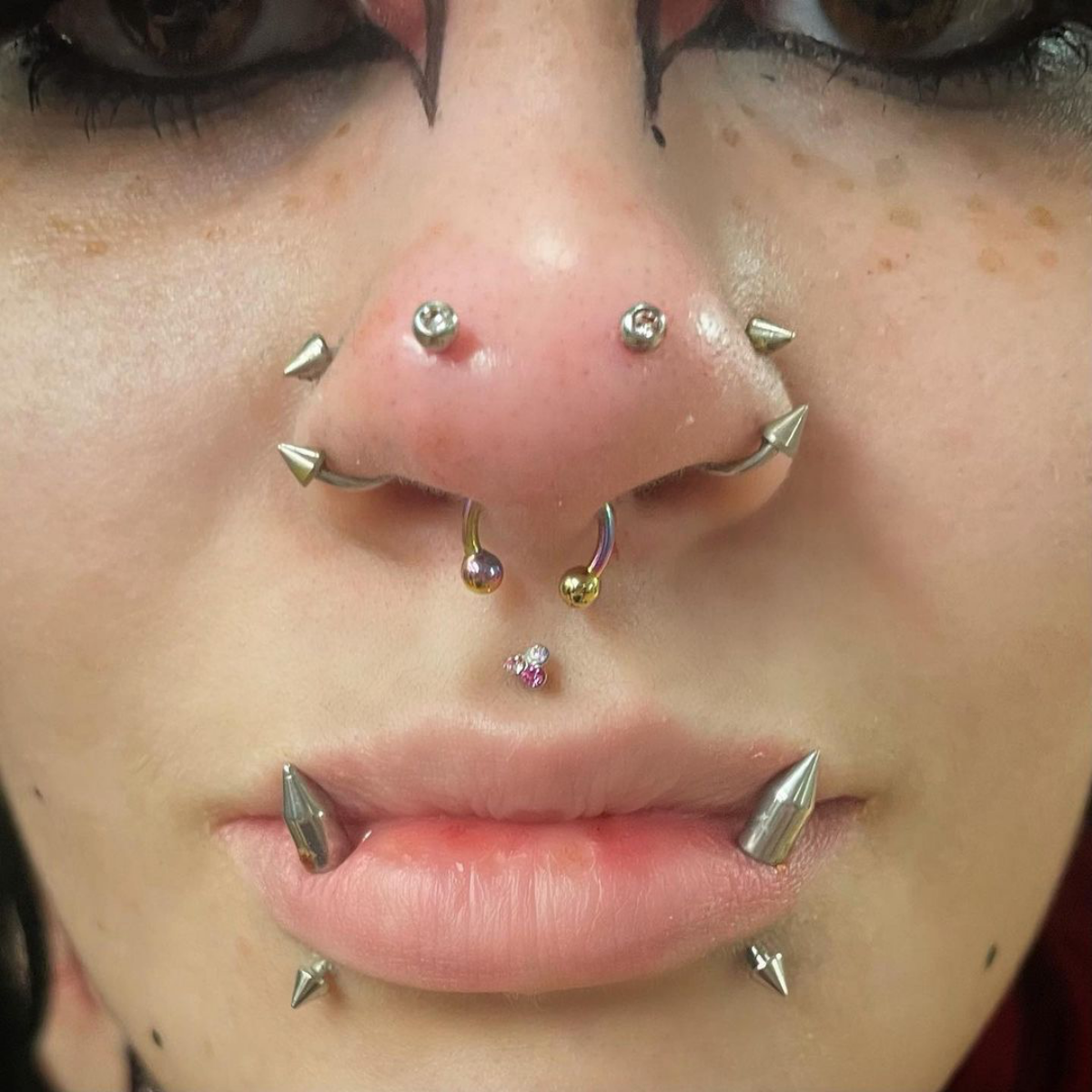
The Piercing Process: A Step-by-Step Breakdown
When we’ve confirmed the anatomy is right and you’re 100% on board, the procedure itself is very methodical. It’s a quiet, focused process.
1. Marking and Confirmation: This is the most critical part. I’ll have you sit up straight and use a sterile skin marker to place a tiny dot on top of your nose and another underneath. Then, I break out the calipers to make sure they are perfectly, I mean PERFECTLY, aligned. I’ll even use a piece of thread to check the vertical axis. Then, I hand you a mirror. You have to love the placement. It’s your face, so you get the final say.
2. Prep and Setup: You’ll lie back while I thoroughly clean the area with an antiseptic skin prep. My station will already be set up with a sterile field, and I’ll open all the single-use, sterilized packages (gloves, gauze, needle, jewelry) right in front of you. Transparency is key.
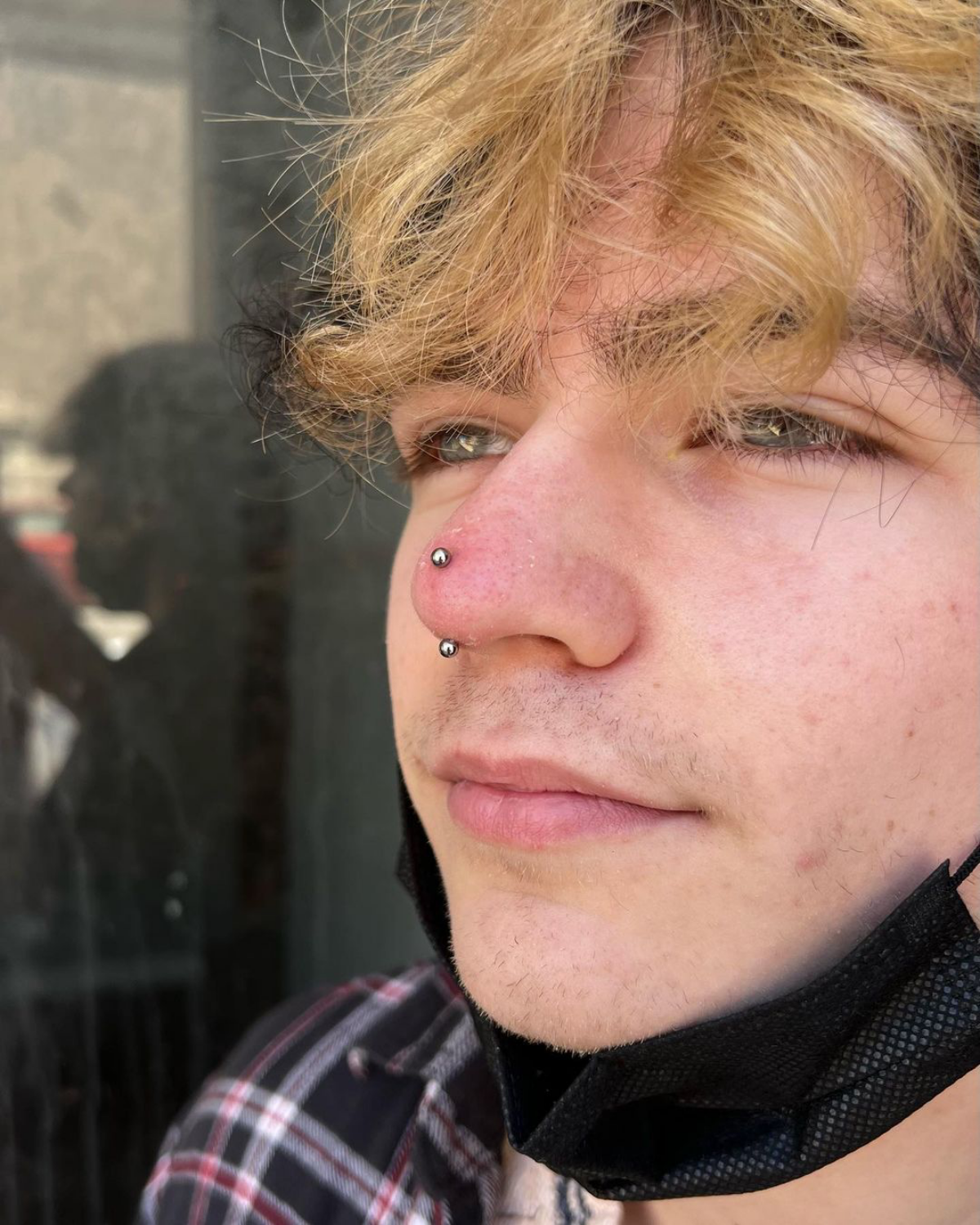
3. The Main Event: For a rhino, I almost always pierce freehand—no clamps. Clamps can distort the tissue and cause a crooked piercing. I’ll brace the tissue with my fingers, line up a super-sharp, hollow 14 or 12-gauge needle with the bottom mark, and ask you to take a deep breath. On the exhale, the needle goes through in one smooth, confident motion. It’s fast. You’ll feel a sharp, intense pinch and a lot of pressure. It’s normal for your eyes to water—it’s just a reflex!
4. Jewelry Insertion: A taper pin connected to the jewelry follows the needle right into the new channel, and then the top ball is screwed on securely. For initial jewelry, we only use an implant-grade straight barbell (usually titanium, ASTM F-136). It has to be extra long to allow for swelling, typically adding about 1/4 inch (6mm) to the measured tissue.
The Healing Journey: Your Real Work Begins Now
The piercing itself is the easy part. The healing is a marathon, not a sprint, taking anywhere from 6 to 12 months, sometimes even longer. Here’s how you get through it.
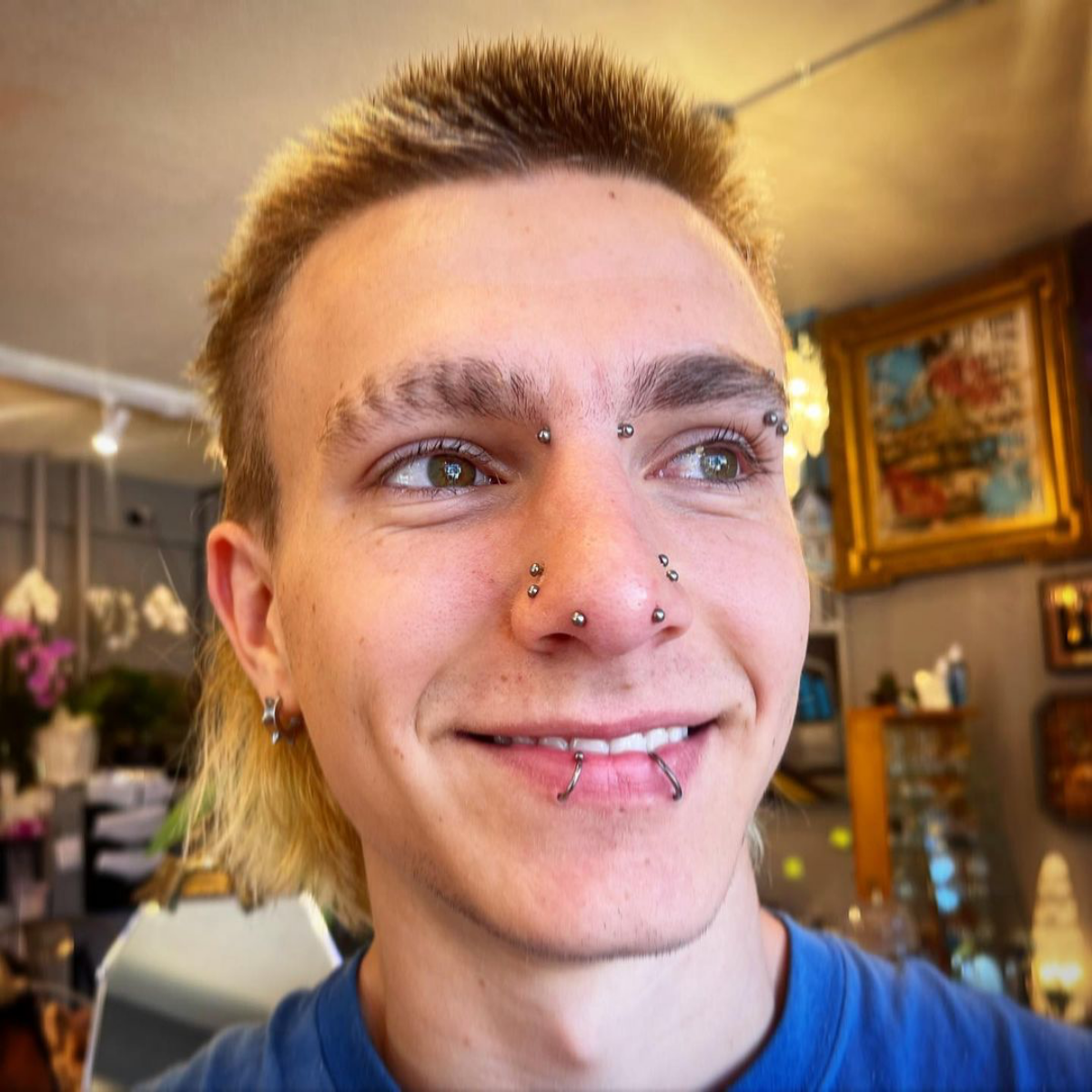
Your Aftercare Shopping List:
- Sterile Saline Wound Wash: Grab the kind in a pressurized can from any pharmacy. It’ll run you about $5 to $10. Make sure it has NO additives—just 0.9% sodium chloride and water.
- Non-Woven Gauze Pads: A small pack costs just a few bucks ($3 – $5) and is much better than cotton balls that leave fibers behind.
- Paper Towels: You’ve already got these. Perfect for gently patting the area dry.
Twice a day, you’ll spray the saline directly on the entry and exit holes, let it sit for a minute, and then gently pat it completely dry. That’s it. Do not touch it, twist it, or play with it. And keep all makeup, lotions, and face washes away from the piercing.
Quick Tip on Daily Life: How do you wash your face? Don’t just splash water on it. Wet a washcloth and carefully clean around the piercing. Think surgical precision, not car wash. If you get a cold, blowing your nose is tricky. Gently press one nostril closed and blow softly through the other, trying not to put pressure on the tip of your nose.

Heads up! The Downsize is NOT Optional
After 4 to 8 weeks, that initial swelling will go down, and your extra-long barbell will suddenly feel way too long. It’s now a liability, catching on everything and causing irritation. You MUST come back to your piercer for a downsize. We’ll swap it for a shorter bar that fits snugly. Skipping this step is one of the main reasons rhino piercings fail. Budget for this—a new, high-quality titanium bar will likely cost you another $30 or more.
Troubleshooting Common Problems
Even with perfect care, this piercing can be fussy.
Irritation Bumps: These are the most common issue—little red bumps that are an inflammatory response to movement or pressure. They usually pop up a few weeks in, especially if you’ve snagged it or if your jewelry is too long. The solution? Stick to your cleaning routine, be extra careful, and get your jewelry downsized. They will go away with patience.
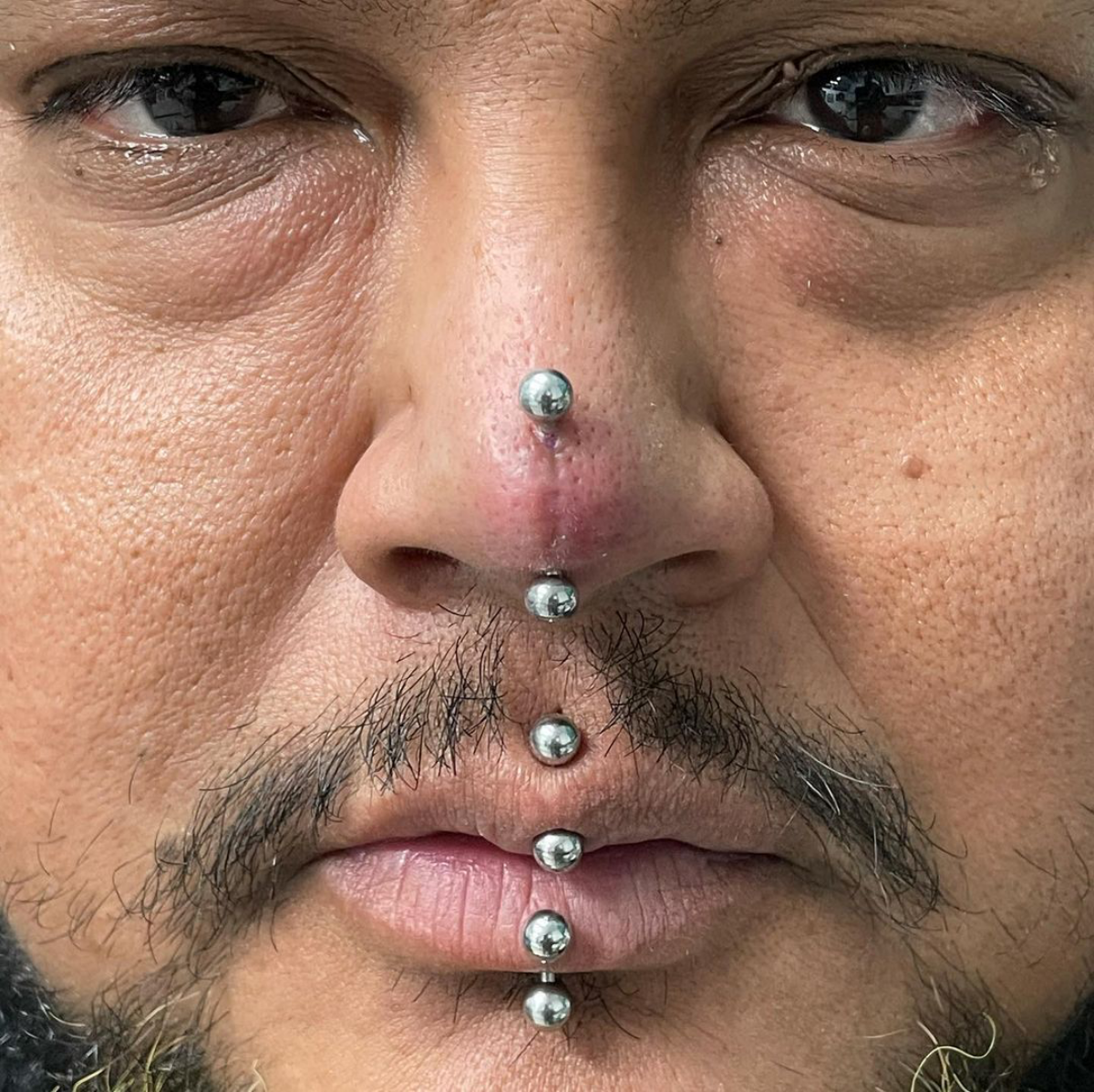
Signs of Infection: An infection is different. Look for thick yellow/green pus, spreading redness, skin that’s hot to the touch, and maybe even a fever. If you see this, DO NOT take the jewelry out. See a doctor immediately for antibiotics.
Jewelry, Costs, and Finding the Right Piercer
A rhino piercing is an investment. Expect the piercing fee to be between $60 and $100, plus the cost of the initial jewelry, which can be $40 or more for good quality titanium. Don’t cheap out here.
Your choice of piercer is everything. Look for a pro with a solid portfolio showing clear photos of fresh AND healed rhino piercings. A healed piercing is the ultimate proof of skill.
And just as important, know the red flags. Walk away if the piercer:
- Suggests using a piercing gun. (RUN!)
- Can’t show you their autoclave and recent spore test results.
- Tries to use “surgical steel” for a fresh piercing instead of implant-grade titanium.
- Gets defensive when you ask questions about their experience or sterilization.
- Pressures you or makes you feel rushed.
A great piercer is a partner. They should make you feel informed and confident. The rhino piercing is a stunning modification, but it’s for the dedicated. If you’re ready for the commitment, the result is absolutely worth it.
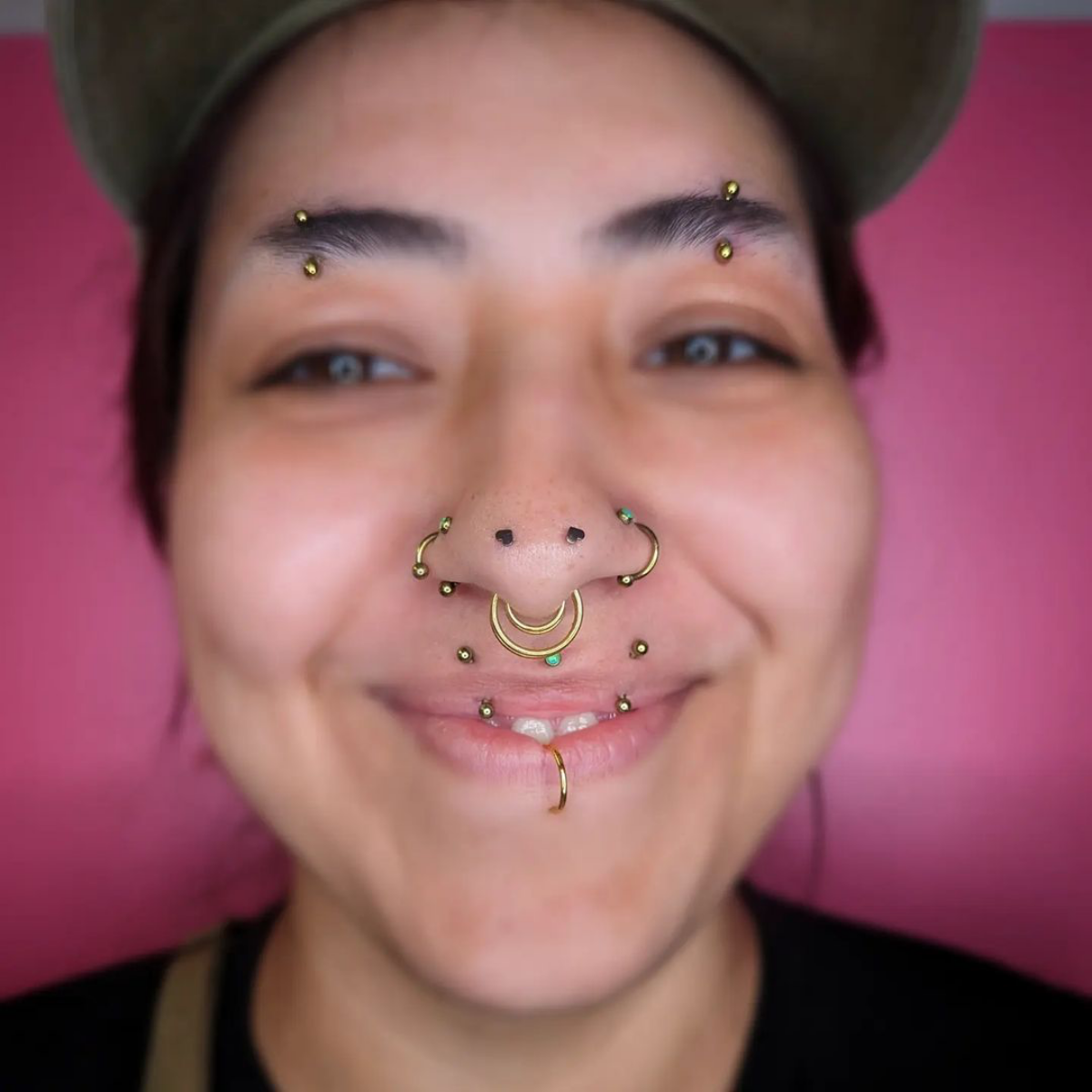
Galerie d’inspiration

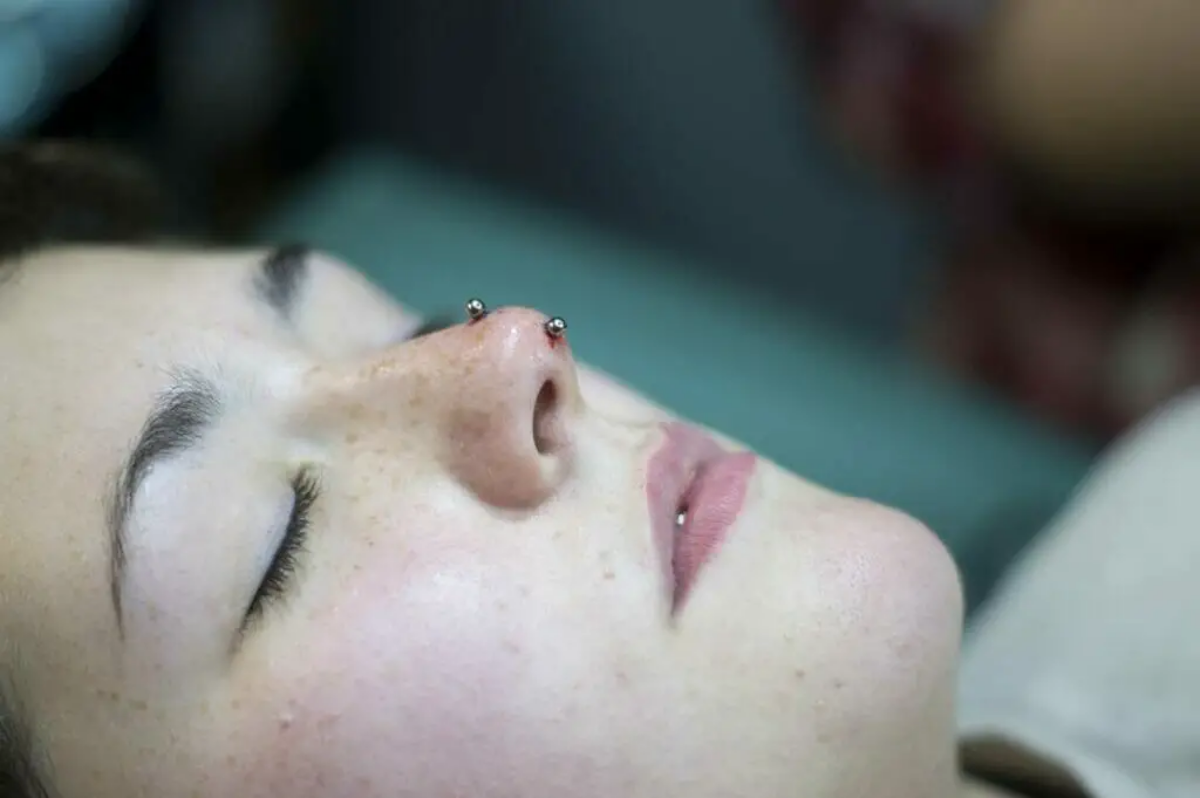
The tip of the nose is one of the most nerve-dense, avascular (low blood flow) areas to pierce, which is why healing requires both patience and precision.
This isn’t just about toughness; it’s about biology. Unlike a lobe, the cartilage at the tip receives less blood, meaning the body’s healing resources take longer to get where they need to go. This anatomical reality is why piercers stress a 6-12 month healing window and why you can’t rush the process.
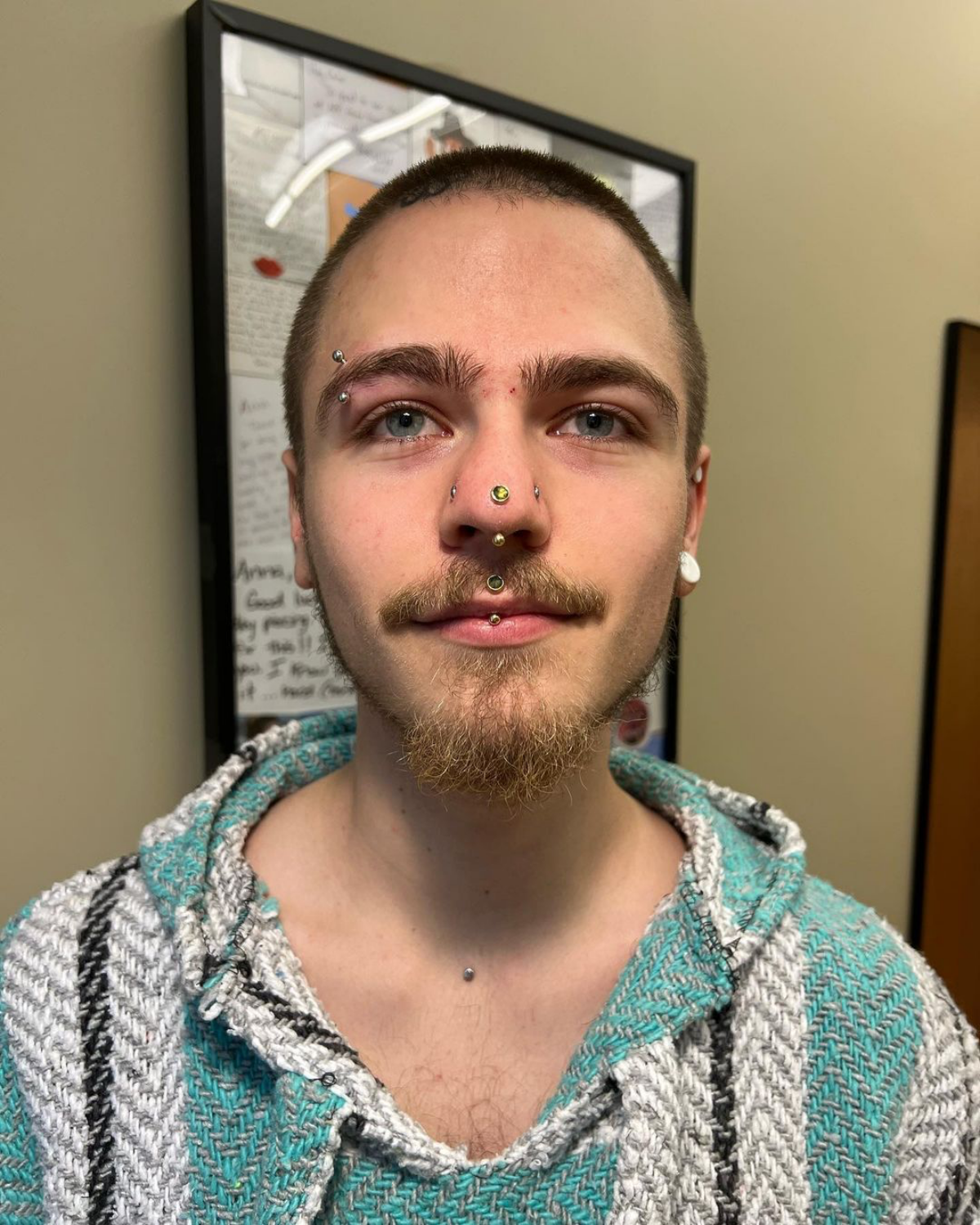
Implant-Grade Titanium (ASTM F-136): The gold standard for initial piercings. It’s completely nickel-free, lightweight, and non-porous, minimizing the risk of irritation and allergic reactions during the critical healing phase.
14k or 18k Solid Gold: A beautiful choice for once the piercing is fully healed. Ensure it’s solid, not plated, and from a reputable body jewelry brand like BVLA or Anatometal to guarantee it’s nickel-free and body-safe. Never start with gold unless you’re 100% certain of its alloy composition and have no metal sensitivities.
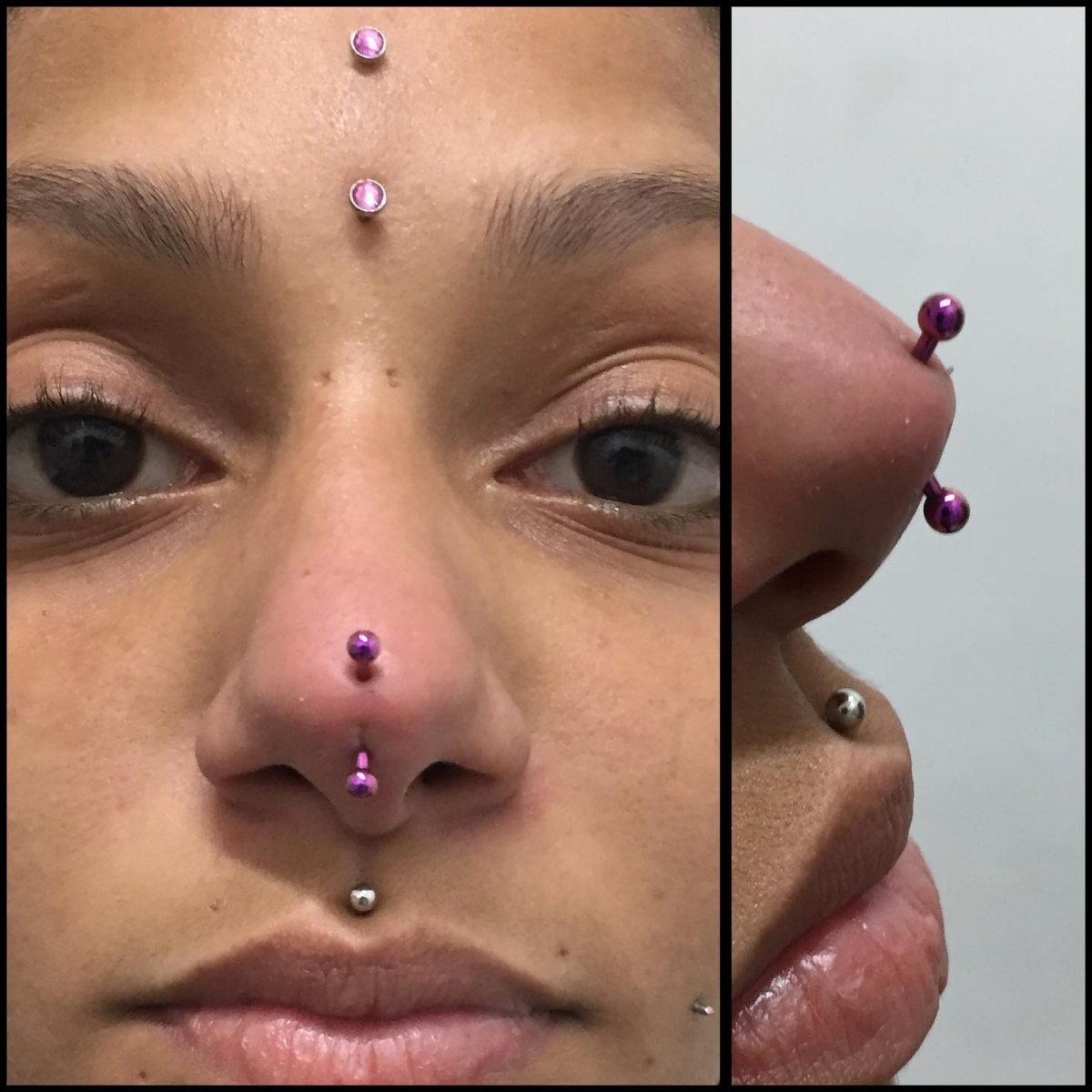
Once you’re past the long healing journey, the fun begins. The rhino piercing is a canvas. Think beyond the standard silver ball ends.
- For a subtle glint, a small bezel-set gemstone from a brand like NeoMetal is perfect.
- For a bolder, more punk-inspired look, small cone or spike ends create a striking silhouette.
- Once fully healed and established, delicate chains can be draped from the rhino to a nostril piercing for a truly custom, ornate look.
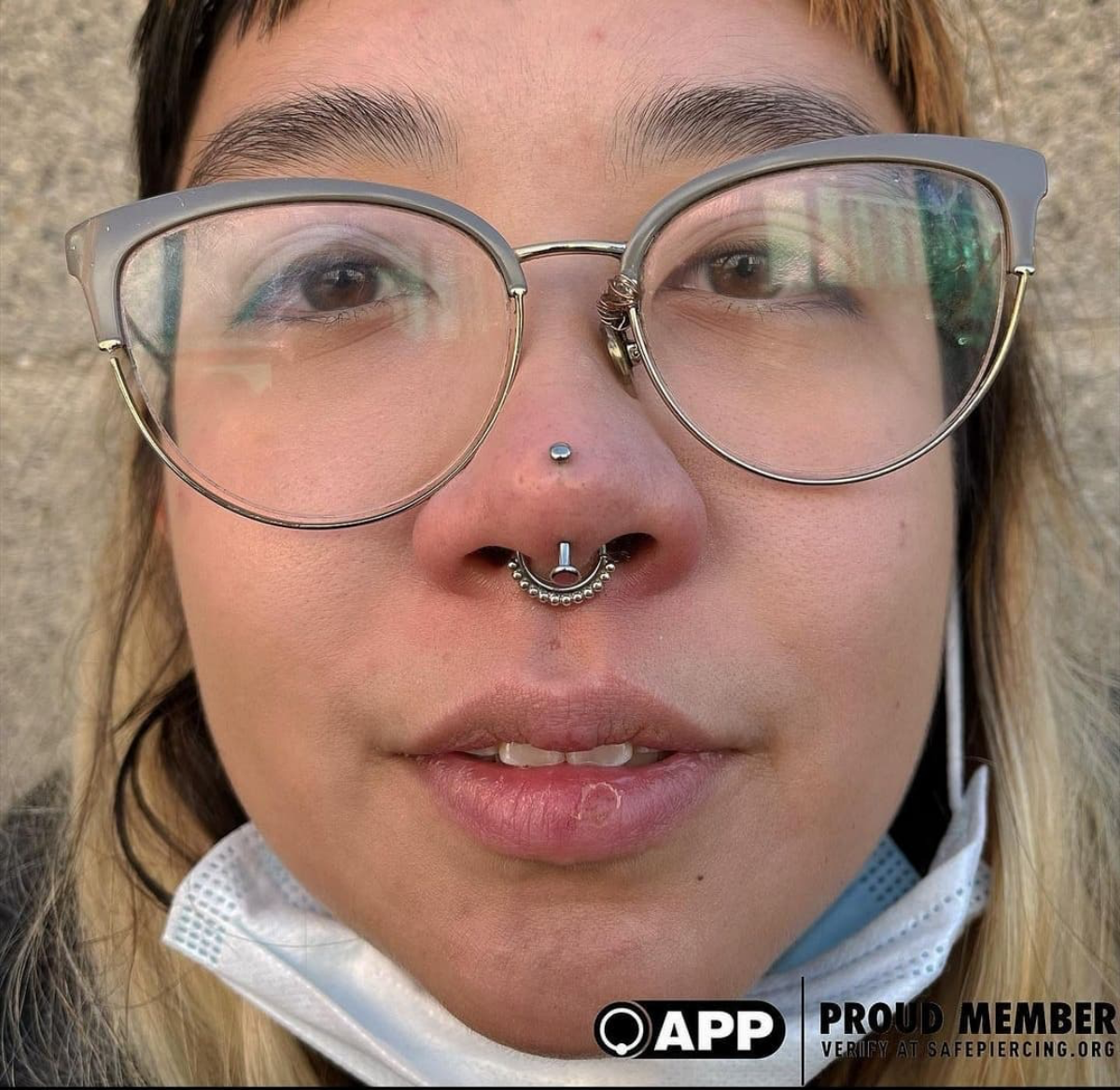
What’s the one mistake even the most diligent people make?
Over-cleaning. It comes from a good place, but bombarding a new piercing with harsh chemicals or cleaning it more than twice a day does more harm than good. Ditch the alcohol, peroxide, and scented soaps. They strip the area of good bacteria and irritate the delicate healing channel (the fistula). Stick to a simple sterile saline spray, like NeilMed Piercing Aftercare, once or twice a day. Let your body do the rest.
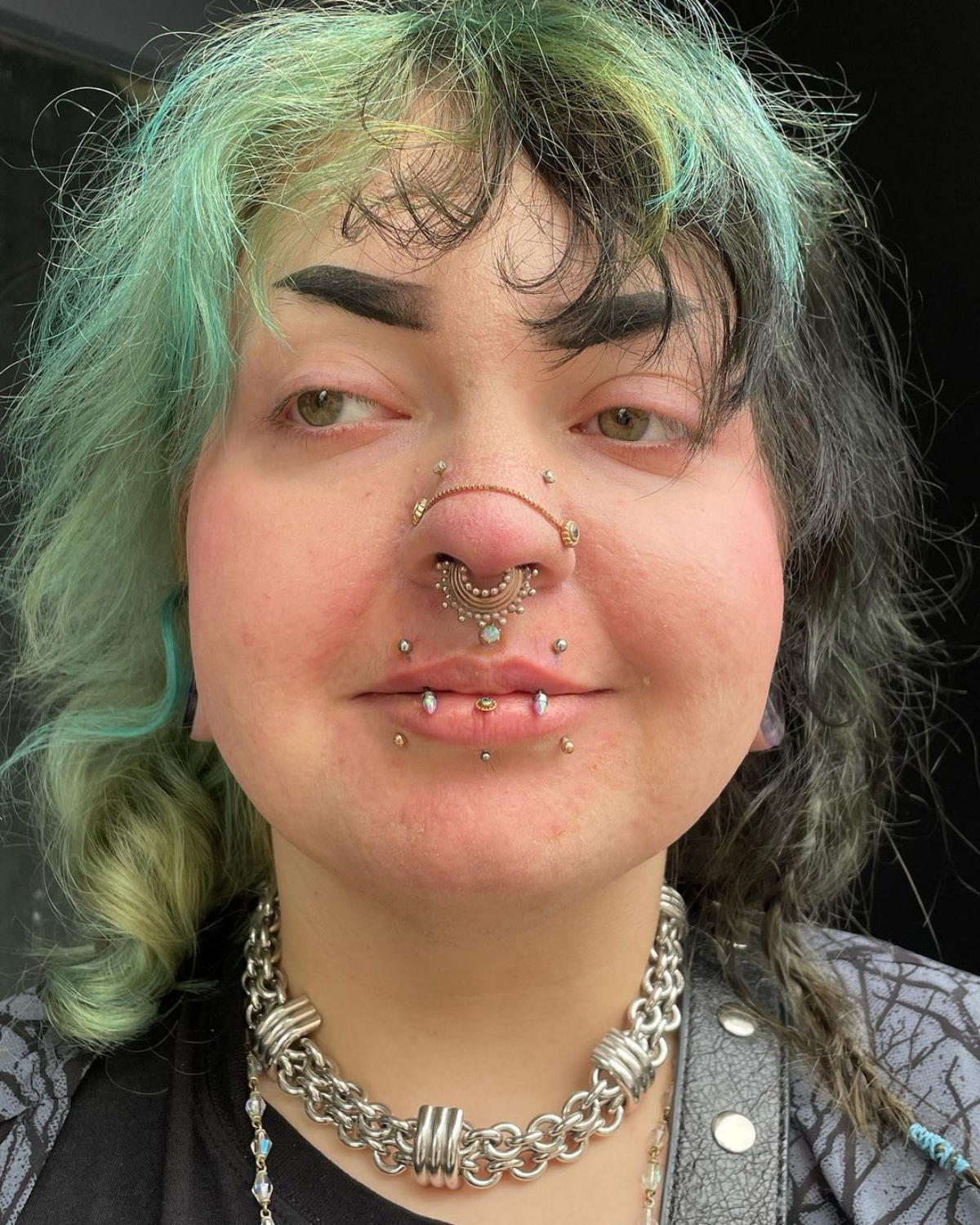
Important point: Your first piece of jewelry is not your forever jewelry. The initial barbell is intentionally longer to accommodate for the inevitable swelling. After 4-8 weeks, once the swelling has subsided, you MUST see your piercer for a ‘downsize’. They will fit you with a shorter barbell. Skipping this step can lead to irritation, migration (the piercing shifting), and unsightly bumps caused by the excess length catching on things.
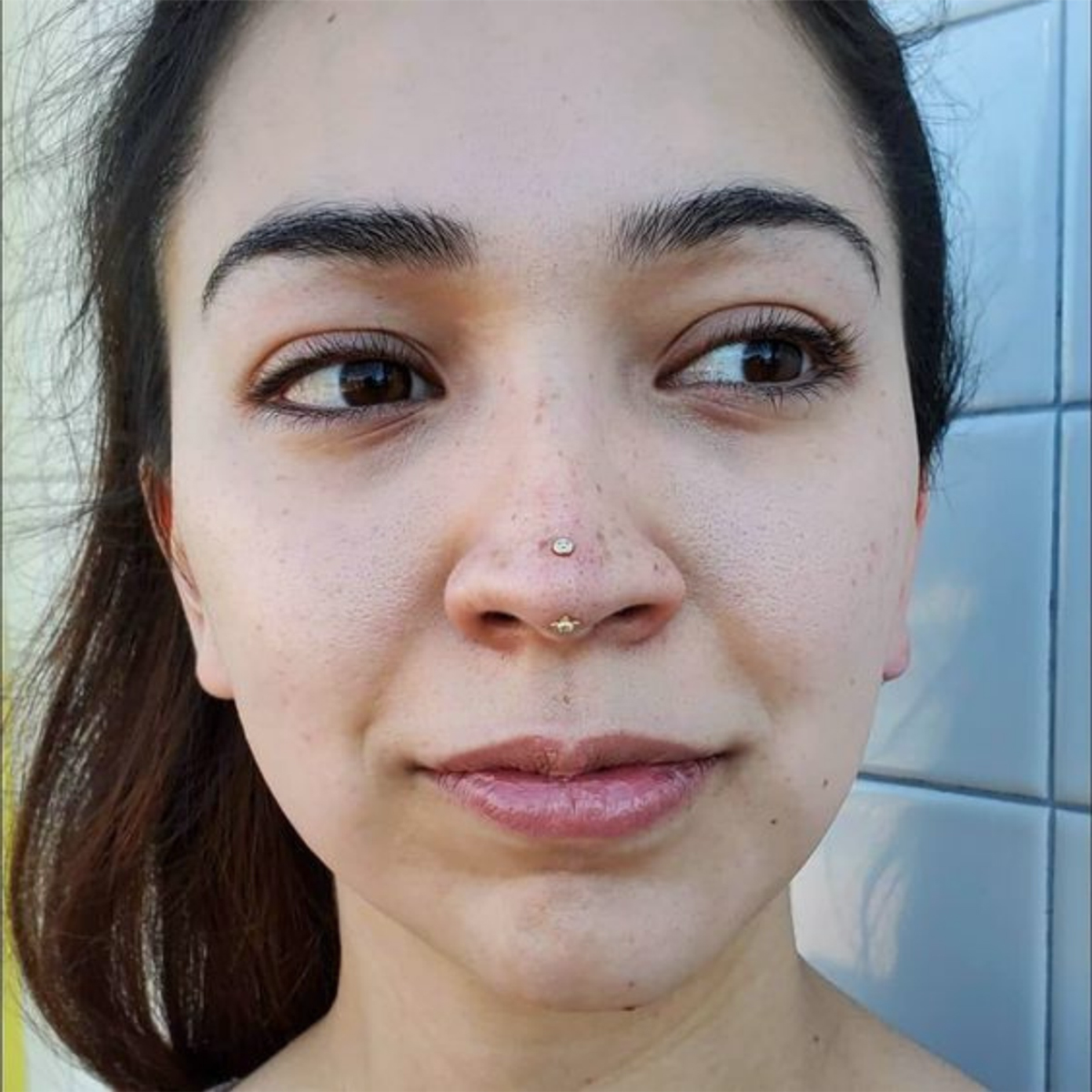
- Perfectly straight and centered placement.
- Less potential for tissue damage.
- A piercing experience tailored to your exact anatomy.
The secret? A piercer who is proficient in the ‘freehand’ technique. Instead of using clamps to hold the tissue, they use just the needle, allowing them to feel the tissue and navigate the cartilage for the smoothest, most accurate channel possible. Ask your potential piercer about their preferred method.
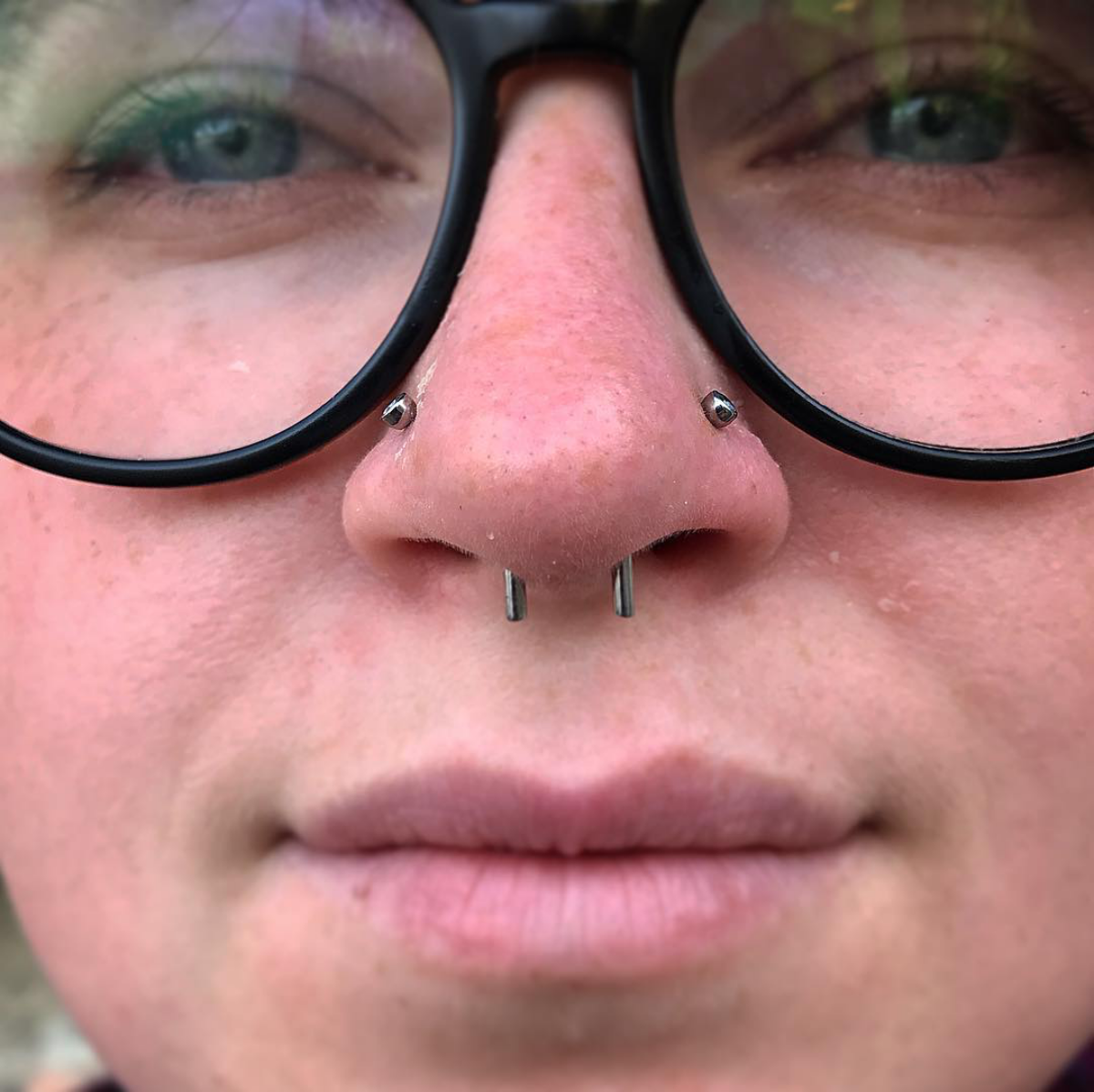
A rhino piercing is considered a ‘high-commitment’ piercing not just for its healing, but for its visibility. There’s no hiding it.
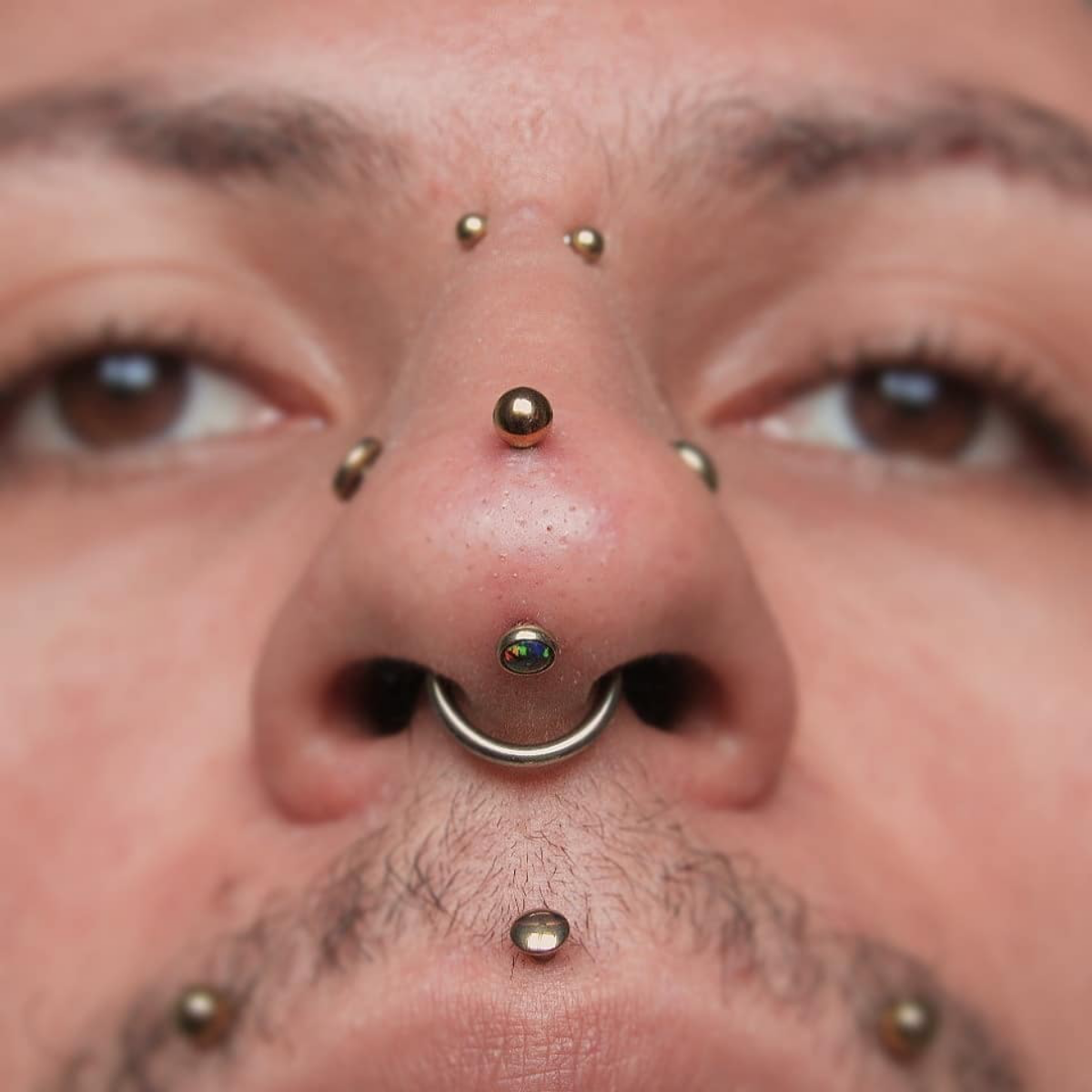
Your aftercare kit is non-negotiable. Don’t leave the studio without knowing exactly what to get. You’ll need:
- Sterile Saline Solution: Look for products containing only 0.9% sodium chloride and water. Avoid any with extra additives.
- Non-Woven Gauze: For gently drying the area after cleaning. Cotton balls or swabs can leave behind pesky fibers that can get into the piercing.
- Patience: The most crucial component. Don’t touch, twist, or change the jewelry until a professional says it’s time.
Be prepared for the total investment, which goes beyond the initial procedure. A quality rhino piercing involves multiple costs:
- Piercing Fee: This covers the piercer’s time, expertise, and sterile setup. Expect $80-$150+.
- Initial Jewelry: A basic implant-grade titanium barbell will start around $40.
- Aftercare Supplies: Around $15-$20 for saline spray and gauze.
- Downsize Jewelry: You’ll need to buy a second, shorter post after the initial swelling goes down, which is another $40+.










